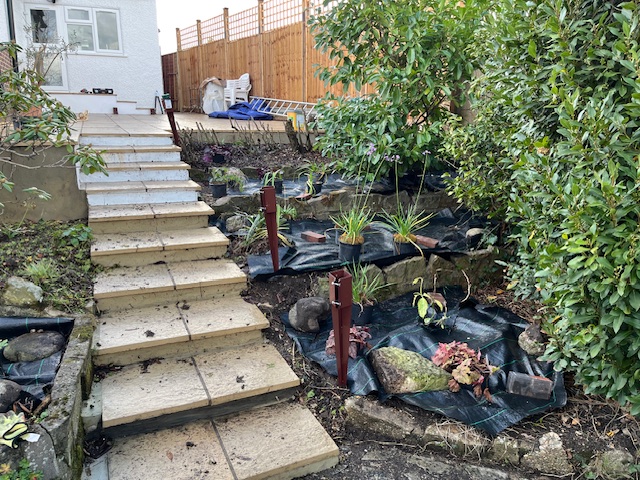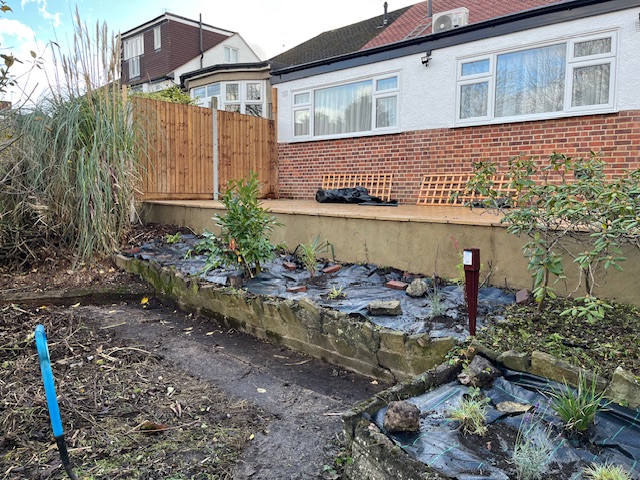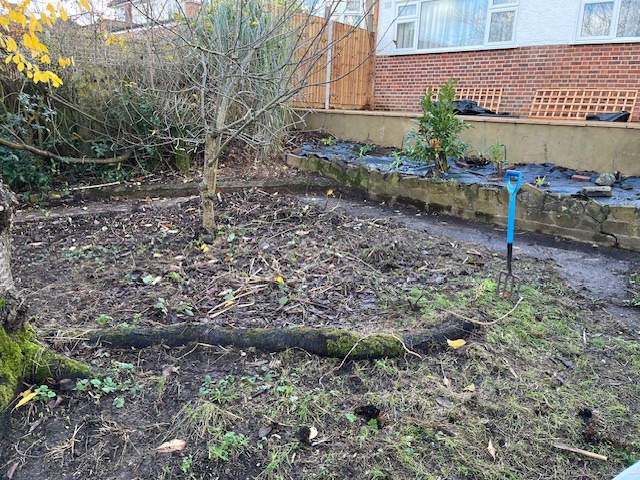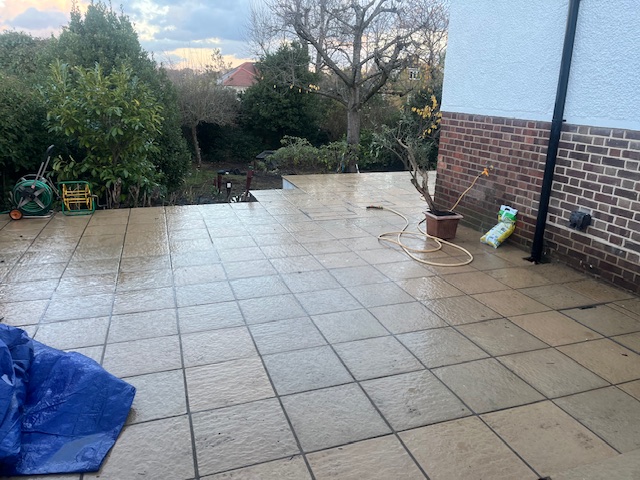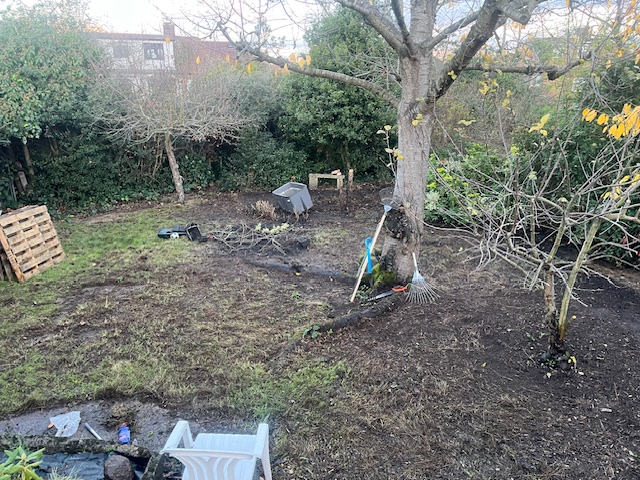Working Together: Restoring and Learning about your garden
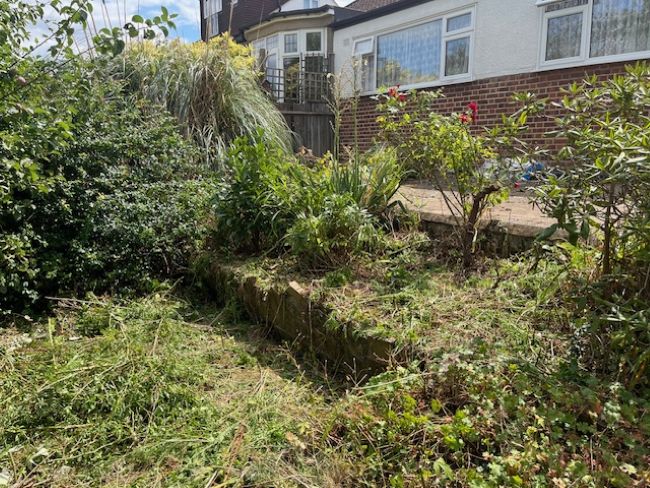
The garden as we started advising and helping our client

Progressing with the garden restoration project
Restoring a Lost Garden: Bringing a 1970s Gem Back to Life in North Sidcup
One of the GardenAdvice Team’s most rewarding – and challenging – tasks is restoring long-neglected gardens that were once much-loved and carefully curated spaces. A perfect example of this is a garden in North Sidcup, London, originally created in the early 1970s. Like many of its era, it featured an elegant mix of structural shrubs, fruit trees, and flowering perennials. But after years of neglect, it had become overrun with brambles and self-seeded invaders.
The First Steps: Assessment and Discovery
Every restoration begins with a site assessment. In this case, the bones of a beautiful garden were still present — just hidden beneath years of overgrowth. Agapanthus, quince, apples, bay trees, and Choisya (Mexican orange blossom) were among the surviving plants we identified as worthy of saving.
The initial task was clear: tackle the brambles. We do this by hand to carefully avoid damaging the underlying plants and structure. This slow and deliberate approach ensures we can spot and preserve valuable specimens as they’re uncovered.
Bramble Control and other perstant weeds: A Two-Part Strategy
Once the major growth is removed, we apply a more targeted bramble control technique. If the weather is warm and dry for a couple of days, we treat regrowth using a selective method — wiping Roundup directly onto the stems. This focused approach prevents damage to surrounding plants while effectively eliminating the problem at its root.
Working Together: Restoring and Learning
All of our restoration work is carried out in conjunction with the client, as part of our MyGardenTeam service. This partnership often begins after the client attends a one-day gardening course in their own garden, giving them the knowledge and confidence to start the restoration journey with us.
Restoration is an ongoing process, and we work side-by-side with the client during each visit. They’re typically involved in many of the hands-on tasks such as pruning, clearing, and general labouring, learning more about their garden and developing their horticultural skills along the way. It’s this collaborative approach that not only restores the space but empowers the client to care for and evolve their garden long-term.
Holding the Line: Preventing Reversion
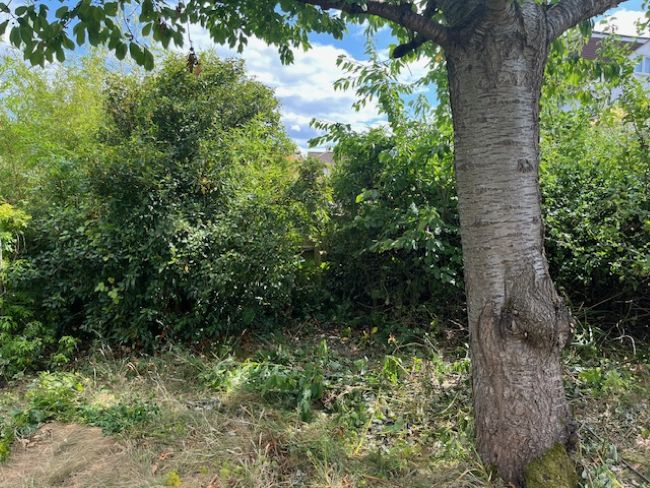
In the early stages of restoration, reclaimed areas are prone to reverting if left unprotected. To prevent this, we cover cleared ground with landscape sheeting or ground cover fabric. This stops light from reaching any remaining bramble roots and weeds, giving us a head start as we move into the next stage.
Lawn Alternatives: Micro Clover for a Resilient Green Space
As the garden begins to take shape, we consider the lawn. In this case, the plan is to cut back the overgrown grass in autumn and reseed using micro clover, often mixed with fine grass varieties. Micro clover is increasingly popular due to its drought tolerance, low maintenance, and all-year green appearance — ideal for today’s changing climate. Unless you’re dedicated to traditional lawn stripes, it’s often the superior choice.
From Recovery to Renewal: Planting the Future
Once the garden is fully pruned and cleared, and the hard landscaping is tidied up, we begin the design and replanting process. Areas covered in landscape fabric are mulched with wood chips or bark, preparing the soil for planting without letting weeds return. From there, we develop a planting scheme that pays homage to the garden’s 1970s origins while introducing modern, climate-resilient species that will thrive for decades to come.
Watch This Space
The restoration of the North Sidcup garden is ongoing, but the transformation is already taking shape. Gardens like this are a reminder of the care and passion poured into outdoor spaces by previous generations — and our mission is to help today’s homeowners reclaim and reinvent them.
If you have a garden in need of restoration, the GardenAdvice Team is here to help — and we’ll work with you every step of the way.
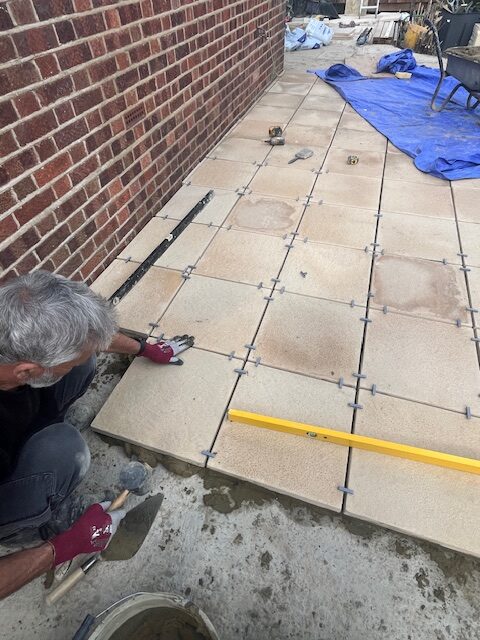
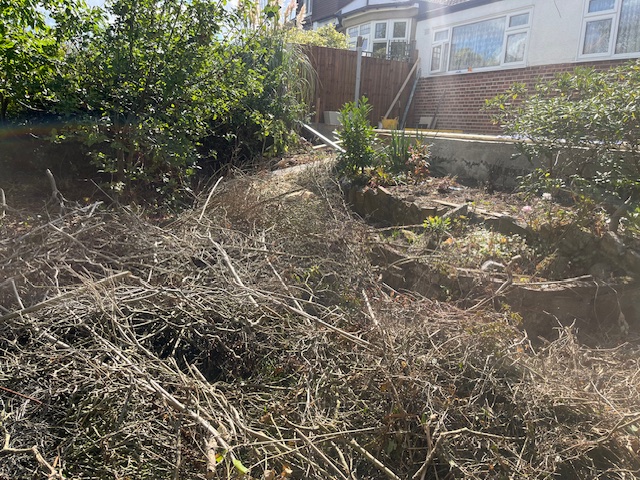
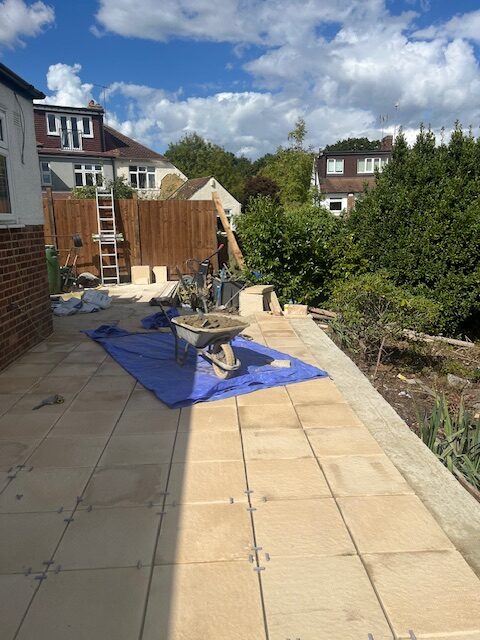
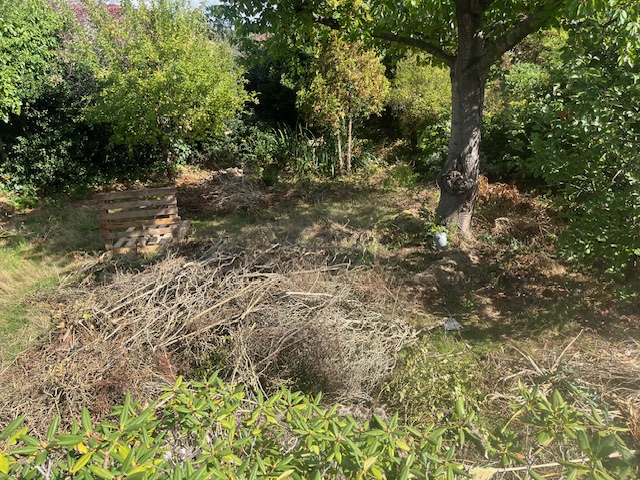
Garden under renovation
Latest Update: Slow and Steady Renovation Progress
One of the most difficult aspects of restoring a neglected garden is knowing when not to rush. Rather than clearing everything in sight, our approach is to take time — sometimes over the course of a year — to steadily bring the garden back to life.
At North Sidcup, this has meant spot-treating brambles, gradually pruning shrubs, and allowing plants the opportunity to recover. In doing so, we’ve uncovered treasures like rhododendrons, hibiscus, and camellia that had been buried under years of bramble growth. These mature plants are not only worth saving but also help to preserve the character of the garden.
💡 Top tip for overgrown gardens: if your garden has been left untended for years, don’t expect to transform it overnight. A steady approach — cutting back in stages, using targeted treatments on persistent weeds, and slowly working your way inwards — allows you to discover what’s still alive beneath the tangle. It also helps maintain the unique character of the garden, particularly when it comes to established fruit trees and mature specimens.
The North Sidcup project is a reminder that patience pays off in garden renovation. We’ll continue to share progress as this restoration evolves, so watch this space for the next update.
Garden during restoration – finishing the first stage
